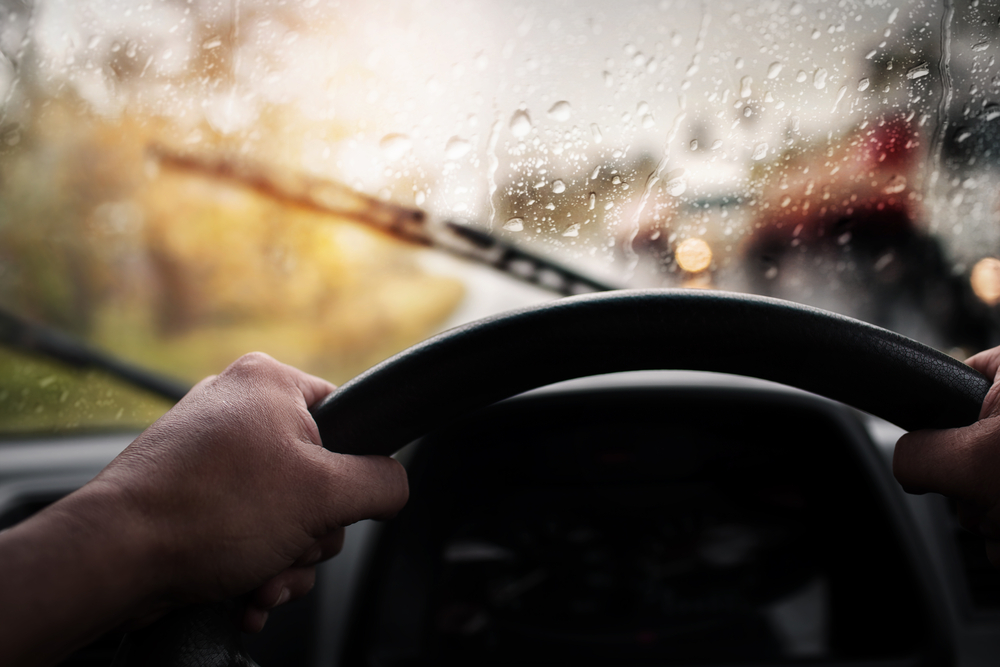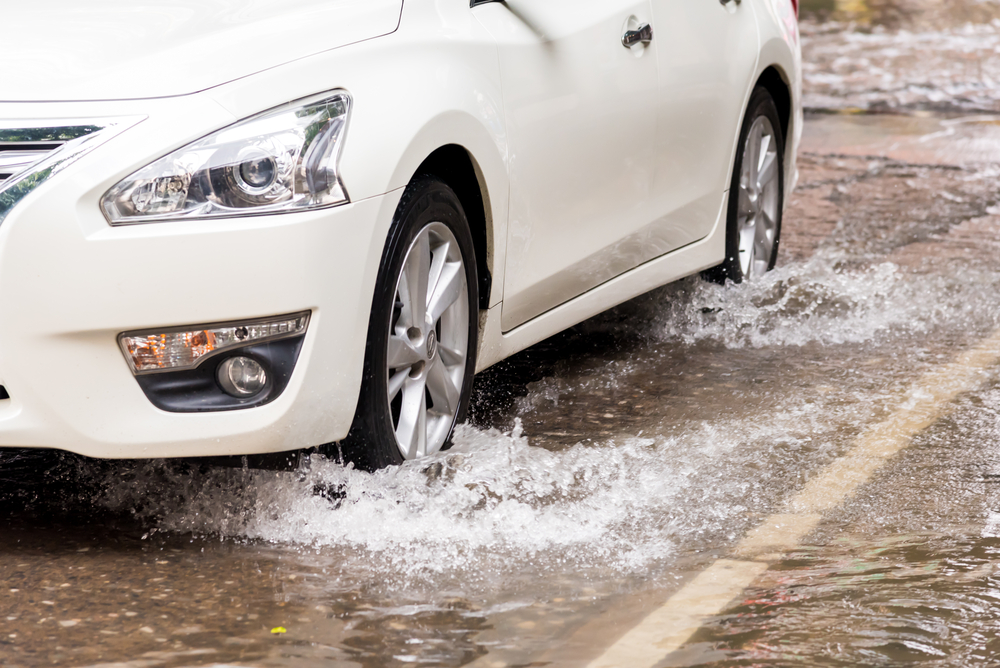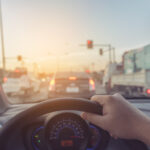The experience of driving in the rain can range from meditative to nerve-wracking. No matter how you view it, it’s important to understand how water on the roadway affects your car’s ability to turn, brake, and maintain contact with the road’s surface. Below we explain when the road is most slippery and how to stay safe when driving in wet conditions.
When Is the Road Most Slippery?
The most dangerous time to drive in the rain is in the first 10 to 20 minutes after it starts raining. The longer it’s gone without rain, the more dangerous this initial period is.
The reason for this is that cars drip oil onto the roadways as they pass over them. This oil sits on top of the pavement and builds up over time, as the sunlight doesn’t effectively evaporate it.
Then the rain starts. Oil that’s been sitting for quite some time suddenly lifts off the surface of the pavement, forming a slick that coats the roadway. For the same reasons that oil is used in machinery to reduce friction and make surfaces slide against one another easily, the oil on the road can cause your tires to slide across it like ice.
Wet roads are just one of the reasons it’s important to have excellent car insurance. Visit Baja Auto Insurance to get a quote to keep your vehicle, your passengers, and yourself safe on the road.
Always use extra caution when driving in the rain, but double that caution when you’re driving in the first 10 to 20 minutes after it starts raining. Below, we look at some great tips to stay safe when the skies above open up!
1. Make Sure You’re Actively Thinking
Many problems drivers encounter on wet roadways could be avoided simply by more actively thinking about their surroundings. It’s common to go into “autopilot” mode when driving, and when it starts raining, it’s important to snap out of that mode and into active thinking mode.
You should ask yourself things like, “How would I react if that truck up ahead lost traction and T-boned?” and, “How visible am I to oncoming traffic right now?” These questions will keep you alert and aware of your surroundings.
2. Headlights on
Your headlights should be on at all times when it’s raining or wet. Visibility decreases dramatically when the air is full of water. That’s why many states require drivers to turn on their headlights whenever their wipers are engaged.
You may notice it’s harder to see at night when it’s raining. Part of this is due to the wet roadway that acts as a mirror for your headlight’s beams, making the road surface ahead of you appear less bright. This is another reason to slow down. Driving at night is also associated with increased injuries.
3. Make Sure Your Tires Have Enough Tread
Tires are, quite literally, where the rubber meets the road. If you don’t have enough tread on your tires, you risk losing traction when stopping, cornering, or accelerating. In the wet, this risk goes up significantly. You can tell if your tires are up to snuff by looking at the “tread bars” between the treads — if the treads are level with these bars, you need to replace your tires.
4. Understand Hydroplaning
Hydroplaning is a strange phenomenon in which your tires, encountering a bit of standing water on the road’s surface, begin to skim over the top of this water instead of contacting the asphalt below. This causes you to slide uncontrollably. If you are on a corner, your car will continue traveling in a tangential line — straight out of the corner. All it takes is one-tenth of an inch of standing water.
Keep in mind that this can occur in any type of vehicle, including a car, an SUV, or a pickup truck. To avoid a hydroplane, slow down. You are extremely unlikely to hydroplane at 35 mph or below.
If you do begin to hydroplane, take your foot off the gas — don’t hit the brakes — and wait for your car to regain traction. You should continue to steer in the direction you want to go, but do not make any sharp steering movements or overcorrect. Once the car regains traction, if the wheels are turned sharply to the left or right, your vehicle will abruptly follow them. This could cause you to run off the road or flip over.
5. No Cruise Control in the Rain

When it’s raining, you should not have cruise control on. Most modern cruise control programming does not account for road traction. That means if your car suddenly hits a long puddle of water and begins to hydroplane, cruise control could cause your tires to accelerate forward.
Turning off cruise control also allows you to be more reactive and use good decision-making in moderating your speed.
6. Increase Your Following Distance
Slow down and double or triple the normal following distance. This gives you reaction time and will help prevent you from going into a skid, which could cause a rear-ending accident. Remember that rear-end accidents are always the fault of the driver and can lead to expensive insurance claims — that’s why it’s important to have great insurance.
7. Check, Double-Check, and Triple-Check Before Merging
With low visibility, it’s much easier to miss that car, truck, or motorcycle next to you. Be sure to take your time, indicate with your turn signal, and triple-check before merging when it’s raining.
Baja Auto Insurance Has Your Back on the Road
Whether you’re in the sunshine or pouring rain, Baja Auto Insurance has your back. Check out our online quote generator and contact us about finding the right renters, health, and motorcycle insurance for your needs — or bundling them together to save even more.






Follow us: